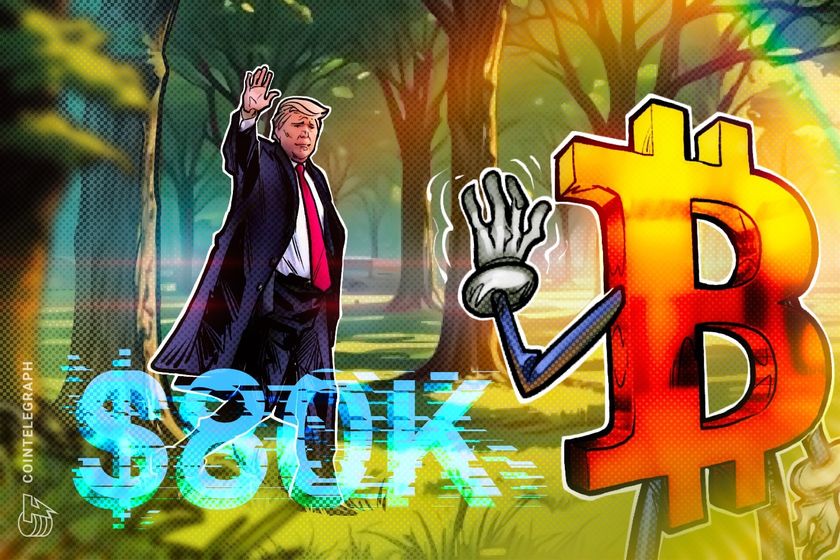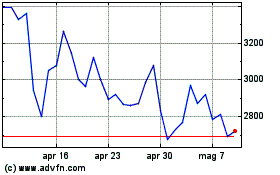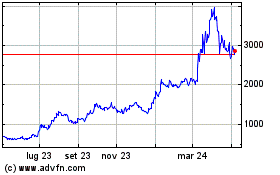

Since US President Donald Trump’s inauguration on Jan. 20,
Bitcoin (BTC) has swung from a
record high of
$109,000 to below $78,000 as major tariff announcements from
the US and retaliatory moves from trade partners shaved off chunks
of cryptocurrency market value and rattled global markets.
“The back-and-forth on tariffs, with Trump sometimes tough and
sometimes accommodating, has left markets in a limbo state, where
few people are willing to be decidedly bullish but just as few are
willing to part with their assets, fearing to be left on the
side-lines at the next rally,” Justin d’Anethan, head of sales at
Liquify, told Cointelegraph.
By mid-March, investors began regaining confidence as White
House messaging pointed to a more measured approach. But mixed
signals remain, and with a second wave of “reciprocal tariffs”
looming on April 2 — dubbed Liberation Day — market jitters haven’t
fully subsided.

Trump’s trade war saga has rattled global markets but
evolved to a softer stance by late March.
Colombian tariff standoff and DeepSeek disruption
shakes Bitcoin
Bitcoin hovered above $100,000 until Jan. 26, when Trump
threatened 25% tariffs on all Colombian imports after Colombian
President Gustavo Petro refused to accept US military aircraft
carrying deported migrants. Petro accused Trump of mistreating
immigrants and retaliated with tariffs of his own.
Colombia quickly reversed course — agreeing to
accept deportees — after facing pressure over its dependence on US
trade. Bitcoin reclaimed $100,000 shortly after. But market
sentiment was further shaken by the sudden rise of Chinese AI firm
DeepSeek, whose budget-built model sparked fears of disruption in
the tech sector and contributed to risk-off sentiment across
markets.

Bitcoin’s dip below $100,000 in late January coincided with
US tariffs standoff with Colombia and the rise of DeepSeek.
Source: CoinGecko
Tariff war begins and Bitcoin racks
losses
On Feb. 1, Trump signed an
executive order to impose 10% tariffs on all Chinese imports
and 25% on Canadian and Mexican goods, effective Feb. 4, citing
national emergency over immigration and fentanyl. China, Canada and
Mexico all threatened retaliation.
Bitcoin tumbled below $93,000, rebounding only after Trump
agreed to a 30-day pause on the Canada and Mexico tariffs on Feb.
3. But the Chinese tariffs took effect as scheduled on Feb. 4 — and
that was the last time Bitcoin traded above $100,000.

Bitcoin’s falls as Trump signs executive order, its
subsequent recovery was a dead cat bounce. Source:
CoinGecko
Bitcoin remained volatile through mid-February. On Feb. 10,
Trump announced the
removal of steel and aluminum tariff exemptions, raising all metal
tariffs to 25%, effective March 12. He then
unveiled a
“reciprocal tariffs” plan to match foreign import taxes.
Bitcoin held steady around $93,000 and briefly rallied to
$99,000. But on Feb. 21, the momentum collapsed
following the Bybit hack
— the largest crypto breach in history — sending Bitcoin back below
$90,000.
Related: In
pictures: Bybit’s record-breaking $1.4B hack

Bitcoin falls just before reaching $100,000 following Bybit
hack, then copper tariff. Source: CoinGecko
On Feb. 25, Trump added to bearish pressure by ordering a review
of potential tariffs on imported copper, citing national security.
Bitcoin dipped below $80,000 for the first time since November.
March shows signs of relief for Bitcoin
March kicked off with Trump issuing
another order reviewing tariffs on lumber and timber. But crypto
briefly rallied after the White House unveiled
plans for a Strategic Bitcoin Reserve and digital asset
stockpile — including XRP, SOL, and ADA.
On March 4, Trump followed through with 25% tariffs on Canada
and Mexico, and doubled Chinese tariffs to 20%. All three countries
vowed to retaliate. The next day, Trump granted a one-month
exemption on tariffs for US automakers importing from Canada and
Mexico. A day later, the White House extended the tariff pause on
many imports that qualify under the USMCA, while still threatening
reciprocal tariffs on April 2.
Related: Does
XRP, SOL or ADA belong in a US crypto
reserve?
Trump credited Mexican President Claudia Sheinbaum for
“unprecedented” border cooperation. Canada also signaled easing
tensions. Bitcoin see-sawed on the $90,000 mark but eventually
dipped below on March 7, and it has not reclaimed that level at the
time of writing.
Meanwhile, Trump finalized the steel and aluminum hikes. Then on
March 13, he threatened 200% tariffs on European wine, champagne
and spirits if the EU moved forward with a 50% tax on American
whiskey as a retaliation against steel and aluminum tax.

Bitcoin trades at around $84,000 on March 1 and March 16
despite large swings in between. Source: CoinGecko
Tone softens and Bitcoin starts rebound but ‘Liberation
Day’ looms
By mid-March, the administration’s tone began to soften. On
March 18, Treasury Secretary Scott Bessent
said tariffs would be
tailored to each country’s trade practices and could be avoided
entirely if partners lowered their own barriers.
Financial markets, rattled for weeks, began to recover. On March
24, Bitcoin rose to $88,474 on reports that Trump’s next round of
tariffs would be more targeted than initially feared.

Softer White House tone sparks Bitcoin recovery. Source:
CoinGecko
“In the week leading up to Trump’s reciprocal tariffs on April
2, expect market volatility, corporate lobbying for exemptions,
preemptive price hikes, and global diplomatic efforts to mitigate
the impact,” Ryan Lee, chief analyst at Bitget Research said in a
written analysis shared with Cointelegraph.
“After the tariffs take effect, anticipate inflation spikes,
supply chain disruptions, and mixed job outcomes, with potential
stock market shocks and retaliatory trade measures from partners
like China and Canada possibly slowing US economic growth.”
Meanwhile, Liquify’s d’Anethan said investors should continue
monitoring traditional market developments, especially with
Bitcoin’s rising correlation with traditional indexes.
“With BTC’s correlation to the S&P 500 and other traditional
assets, it wouldn’t be silly to discount tariffs and geopolitical
maneuvering,” he said.
With April 2 approaching, crypto markets remain fragile — and
investors are bracing for what “Liberation Day” might bring. Trump
recently hinted while speaking to
reporters that tariffs on automobiles, aluminum and pharmaceuticals
are under consideration.
Magazine: What
are native rollups? Full guide to Ethereum’s latest
innovation
...
Continue reading Timeline: How Trump tariffs dragged
Bitcoin below $80K
The post
Timeline: How Trump tariffs dragged Bitcoin below
$80K appeared first on
CoinTelegraph.
Grafico Azioni Maker (COIN:MKRUSD)
Storico
Da Mar 2025 a Apr 2025

Grafico Azioni Maker (COIN:MKRUSD)
Storico
Da Apr 2024 a Apr 2025
